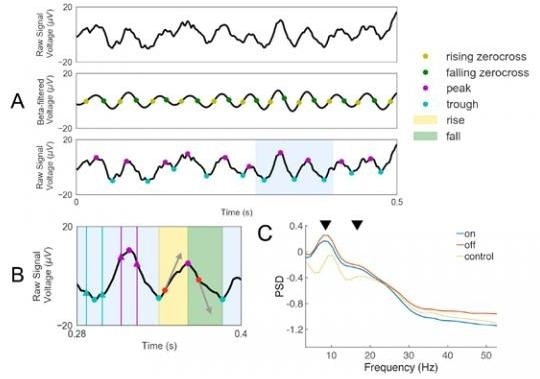

Conventional scalp or cortical surface–recorded EEG is unable to register the momentary local field potential changes arising from neuronal action potentials. The neural activity detectable by the EEG is the summation of the excitatory and inhibitory postsynaptic potentials of relatively large groups of neurons firing synchronously. The EEG is thought to be primarily generated by cortical pyramidal neurons in the cerebral cortex that are oriented perpendicularly to the brain's surface. EPs and ERPs are used in clinical practice and research for analysis of visual, auditory, somatosensory, and higher cognitive functioning.


EEG waveforms may also be averaged, giving rise to evoked potentials (EPs) and event-related potentials (ERPs), potentials that represent neural activity of interest that is temporally related to a specific stimulus. For example, EEG may be used to monitor the depth of anesthesia during surgical procedures given its great sensitivity in showing sudden changes in neural functioning even as they first occur, it has proven quite helpful in this setting in monitoring for potential complications such as ischemia or infarction. Most epilepsy patients also show characteristic interictal (or between-seizure) epileptiform discharges (IEDs) termed spike (<70 μsec duration), spike and wave, or sharp-wave (70–200 μsec duration) discharges.ĮEG has also been adopted for several other clinical indications. With certain exceptions, practically all patients with epilepsy will demonstrate characteristic EEG alterations during an epileptic seizure (ictal, or during-seizure, recordings). EEG is particularly useful for evaluating patients with suspected seizures, epilepsy, and unusual spells. Given its exquisite temporal sensitivity, the main utility of EEG is in the evaluation of dynamic cerebral functioning. The EEG is an electrophysiological technique for the recording of electrical activity arising from the human brain. Hans Berger, a German psychiatrist, pioneered the EEG in humans in 1924. The advent of recording the electrical activity of human beings took another half century to occur. The first known neurophysiologic recordings of animals were performed by Richard Caton in 1875.


 0 kommentar(er)
0 kommentar(er)
